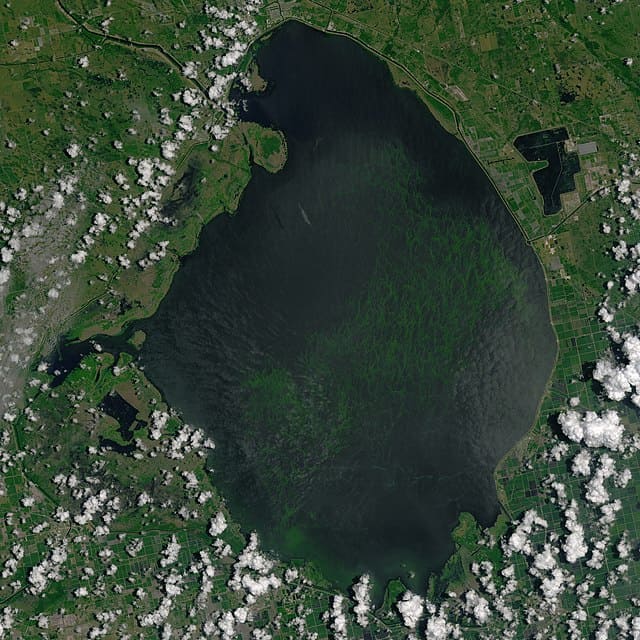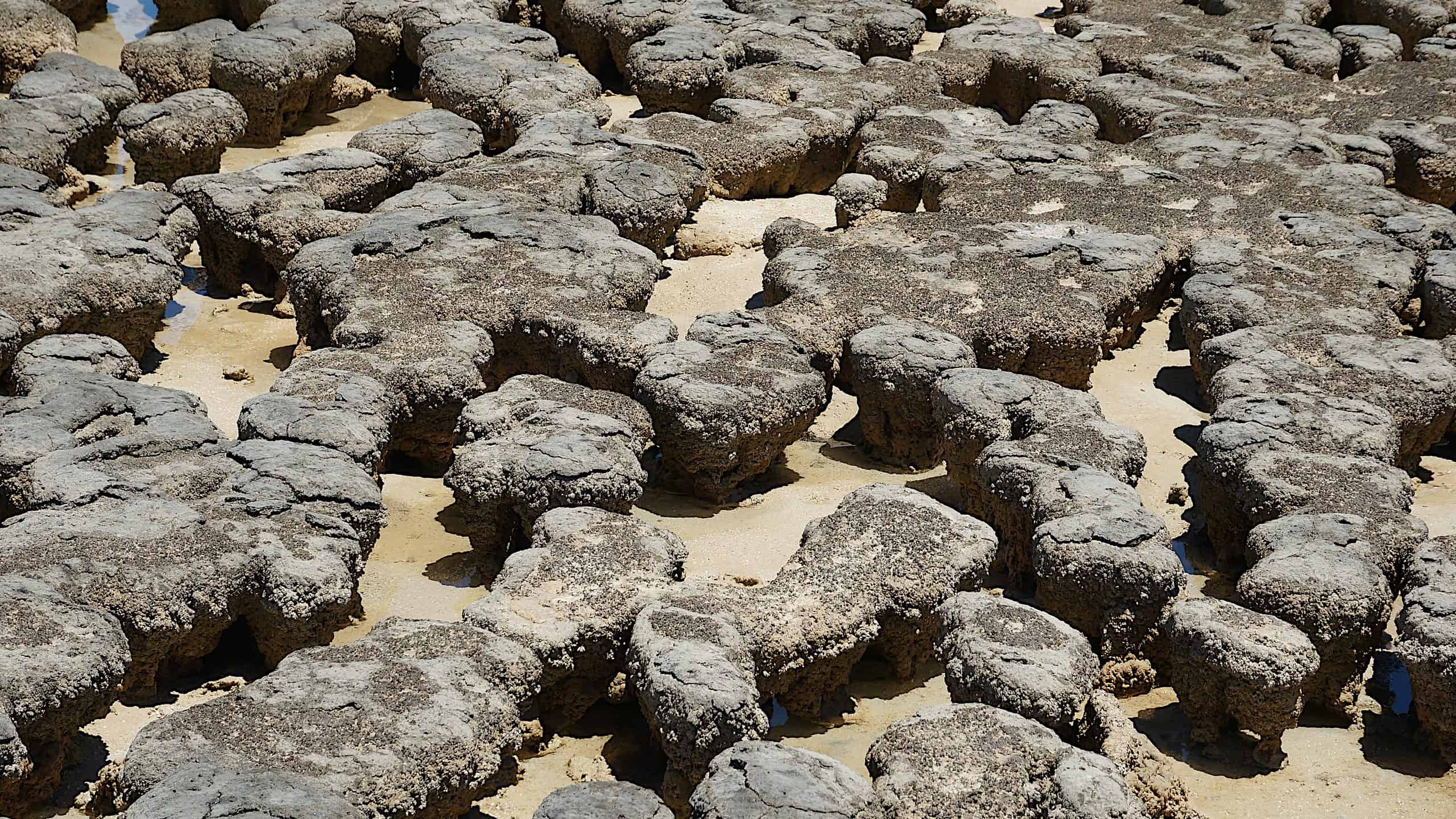The planet Earth is about 4.5 billion years old. Yet, the fossil record does not extend back quite that far. The oldest fossils on earth are still over 3 billion years old, though. Take a look at the 3.5-billion-year-old fossil and see why it’s the oldest confirmed fossil age on Earth. You’ll also learn the age of the oldest animal fossils ever found and see a massive disparity in age!
What Are Fossils?

Fossils come in many shapes and sizes.
©Jaroslav Moravcik/Shutterstock.com
A simple definition of a fossil is the physical remnants of preexisting lifeforms such as plants or animals. Fossils come in a few forms, though. For example, body fossils are the fossilized remains of organisms that had hard parts of their bodies, like their bones or shells.
These parts are preserved in sediment with minerals from the surrounding groundwater replacing some of the original materials. Trace fossils include trails or eggshells that animals left behind many years ago, like dinosaur trackways. Fossil development requires a specific set of conditions to occur.
Some of the conditions needed for fossil development include:
- The animal dies.
- The body is left alone by scavengers in a low-oxygen environment to prevent decomposition, or scavengers leave enough material to fossilize.
- The body is buried in sediment, like sand or mud.
- Layers of sediment build up, forming sedimentary rock.
- Minerals from surrounding water seep into the bones, replacing minerals and turning the entire fossil into stone.
Several things need to go right for fossils to form. These conditions also explain why marine fossils are far more common than terrestrial ones. Generally, fossils are rare considering how many plants and animals once lived on the planet over billions of years.
Why Did the 3.5-Billion-Year-Old Fossils Develop Long After Earth Formed?

Earth’s environment was not conducive to life for hundreds of millions of years after its development.
©iStock.com/Rost-9D
The oldest confirmed fossils are about 3.5 billion years old. Now, it may seem like there is a large time gap between the formation of the planet and the first fossils. While that’s true, it’s important to remember that Earth was not always a hospitable place that preserved life.
Considering the conditions for fossils to form, many issues would have kept the fossils from developing. For one thing, the conditions in the Hadean Eon of Earth, from its formation until about 4 billion years ago, were such that life would not have formed due to the high temperatures of the planet.
Also, plants or animals needed to be around, and they were not for hundreds of millions of years after the formation of Earth.
That’s not even to mention that the materials for the development of sedimentary rock to preserve fossils did not exist until about 4 billion years ago. Still, some early minerals called detrital zircon existed about 4.4 billion years ago.
All these reasons limited the formation of fossils in the years after the planet was formed. Still, fossils preserved evidence of life on Earth that was 3.5 billion years old or possibly older.
What is the 3.5-Billion-Year-Old Fossil?

The 3.5-billion-year-old fossil was that of cyanobacteria found in rocks in western Australia. These bacteria are the oldest accepted evidence of life on Earth, but they may not be the oldest ever discovered. Stromatolites are microbial reefs developed by layers of cyanobacteria, also called blue-green algae.
These formations develop by trapping sediment from nearby water while the mats of bacteria thrived. Stromatolites form, layer upon layer, over many years. As a result, the layers of fossilized bacteria formed, leaving behind chemical signatures that help identify the fossils.
These are the oldest confirmed fossils known to humans. However, other potential older fossils exist as well. Scientists are also investigating biogenic material from Greenland. These remains are about 3.7 billion years old. If confirmed, these fossils would represent much older material compared to the cyanobacteria that are widely accepted as the oldest fossils.
Furthermore, biogenic carbon preserved in zircon from 4.1 billion years ago could also provide the earliest evidence of life discovered so far, pushing back the origin of life by 600 million years! However, the discovery is a bit of a reach. Basically, the building blocks of life were trapped in zircon that could be as old as 4.1 billion years old. So, counting that as fossilized evidence of life may not sit well with all scientists. Nevertheless, it could prove that life was developing at that time.
Currently, the 3.5-billion-year-old fossils from western Australia are considered the oldest in the world. Future studies and peer reviews could change that in the future.
How Old Are the Oldest Animal Fossils?

The oldest animal fossils range in age and are subject to controversy over their age.
©Kimberly Boyles/Shutterstock.com
The oldest animal fossils are about 890 million years old. These fossils belong to a type of sea sponge that once lived in the area that is now northwestern Canada. Like the biogenic carbon fossil, the sea sponge remnants are a bit controversial.
The actual fossils consist of imprints of microstructures of Phanerozoic demosponges. However, not everyone is convinced that these fossils show animal life.
Another option for the oldest animal fossils is about 300 million years younger, the fossils of Dickinsonia. Fossils of these creatures date back to around 558 million years ago, and they were considered the oldest animal fossils for a long time.
Still, scientists make new discoveries all the time. The future could see new fossil discoveries being made along with new techniques for analyzing old fossils being developed. That way, scientists can get a better idea of how and when life began to develop on the planet.
Thank you for reading! Have some feedback for us? Contact the AZ Animals editorial team.








